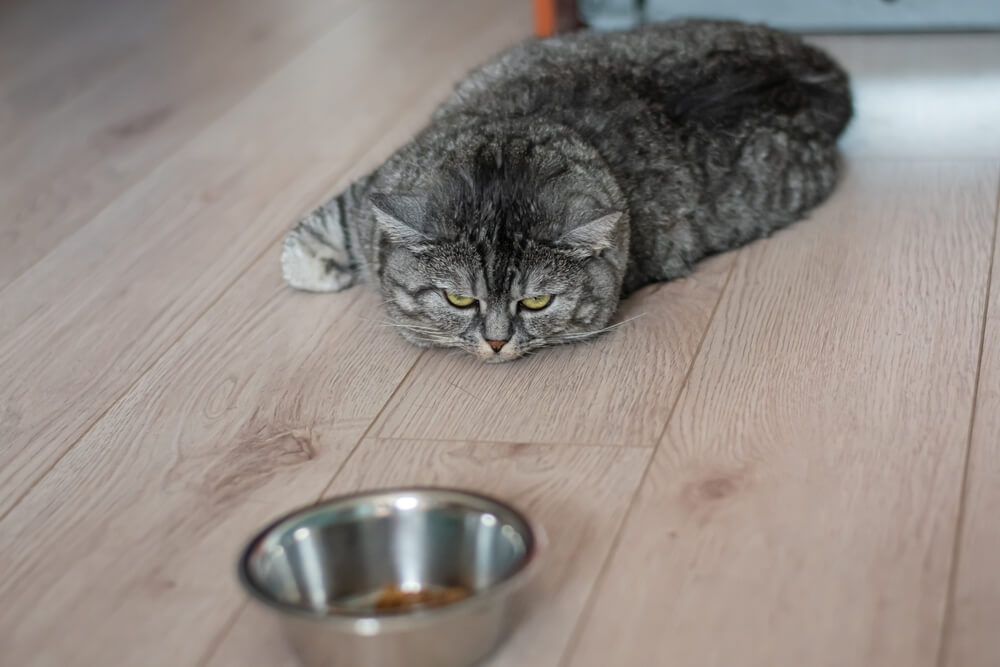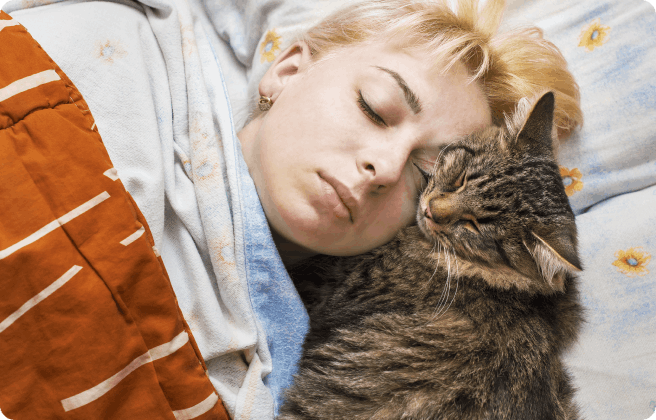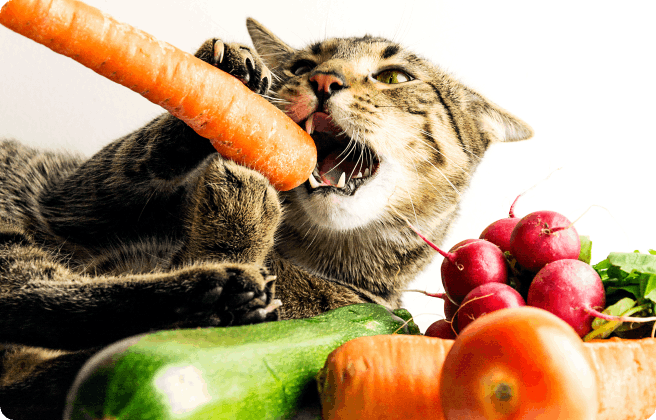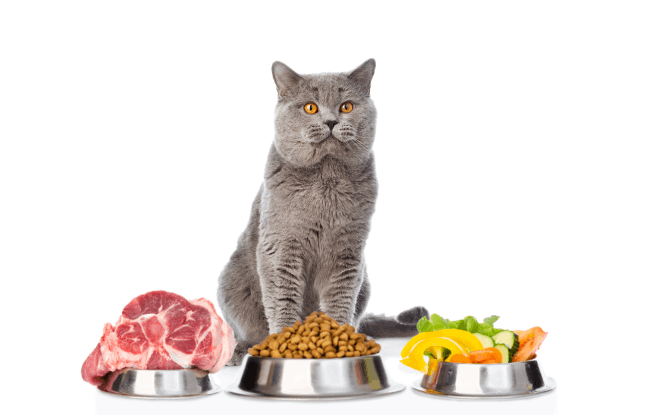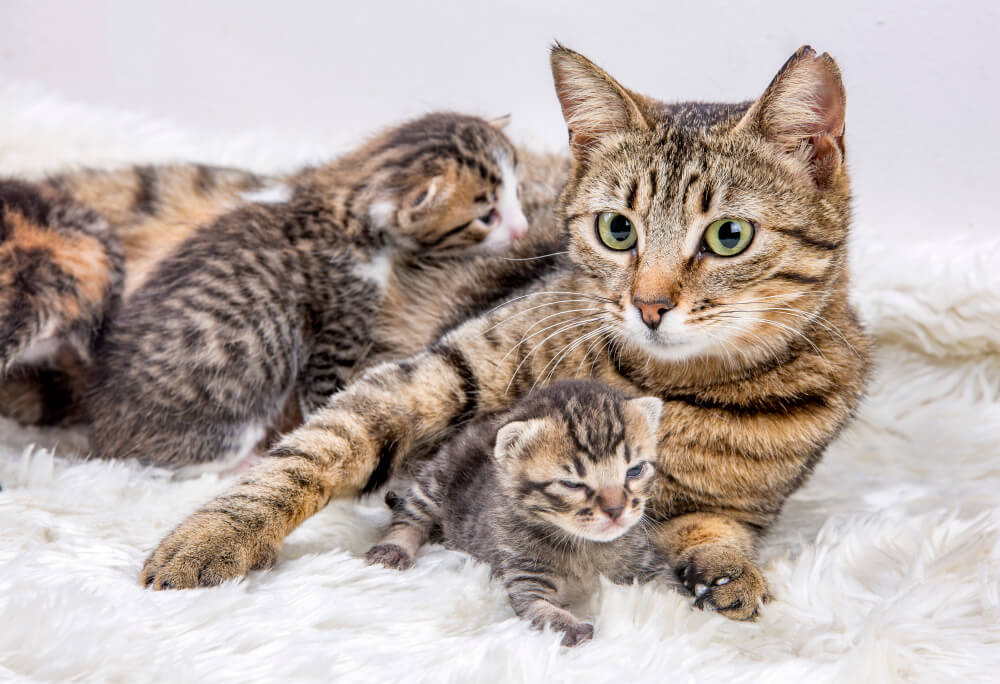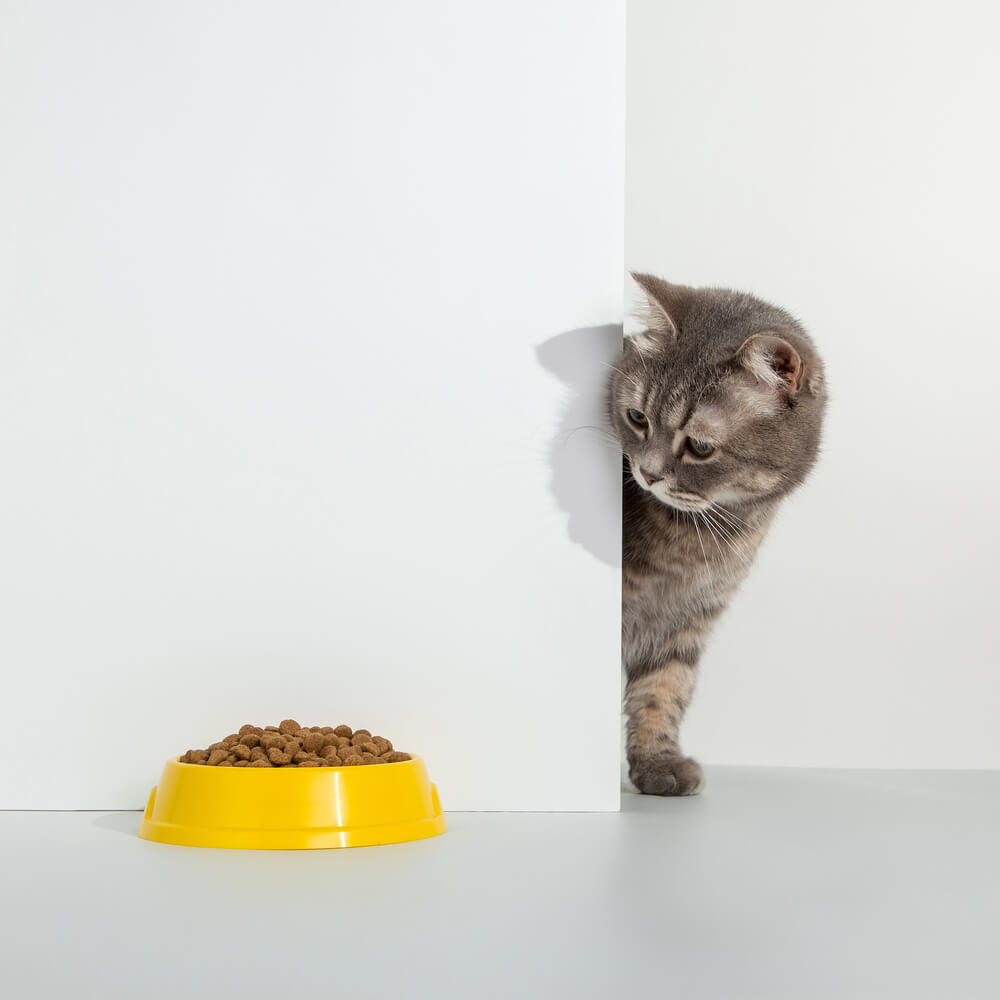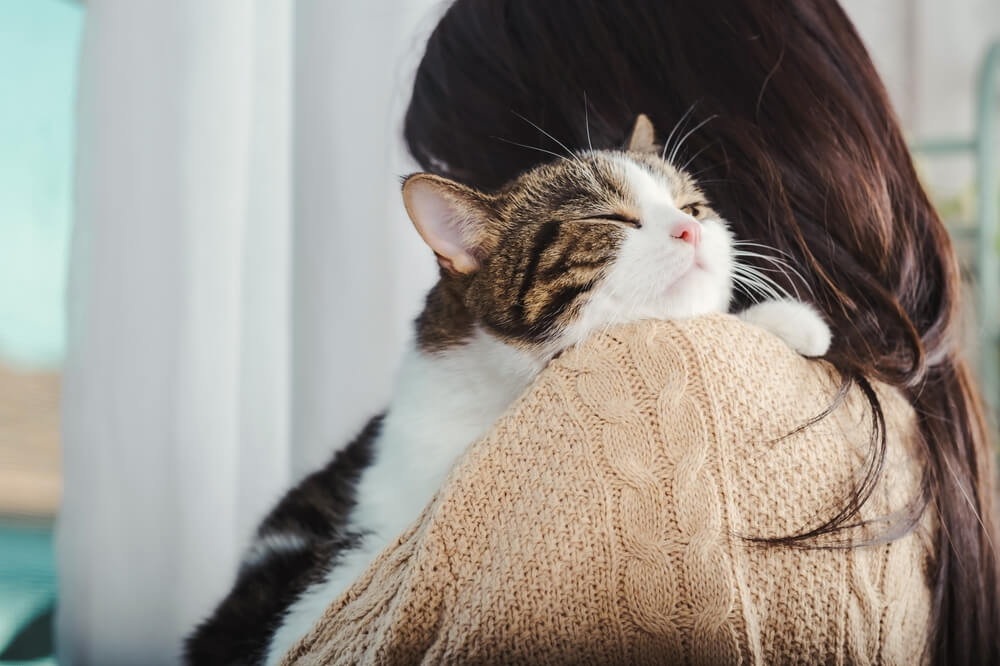
The perception that cats are more aloof and less dependent on humans than dogs is a common stereotype. But it doesn’t accurately capture the diversity of feline personalities or the depth of the human-animal bond.
While it’s true that some cats may take a little longer to warm up to you and it will take some dedication to earn their trust, when a cat chooses you as ‘their person’, it makes things all the more special.
Though cats may not be as outwardly enthusiastic and demonstrative as dogs, many cats love to show affection and have fond moments with their pet parents. So let’s explore this topic further to help you recognise the signs that your cat loves you.
Body language which shows your cat loves you includes:
- Headbutting
- Kneading
- Slow blinking
- Happy tail
- Exposing their belly
- Grooming
- Talking
- Staying close to you
- Sleeping near or on you
- Bringing you presents
Headbutting
Have you ever been headbutted by a cat? It’s a strange and funny encounter, but it’s actually one of the most common ways in which cats show their affection. A gentle bump of their head or rubbing of their cheeks against you is a feline social behavior learnt as a kitten, helping cats to bond. This is because cats have scent glands on their cheeks, forehead, and chin which release pheromones, so rubbing against you is a way for cats to mark you as one of their own.
Kneading
Cats can sometimes be seen using their front paws to “knead” their favorite humans. This behavior starts when kittens are nursing, usually kneading after they have nursed to bring comfort. Adult cats knead when they are content or to soften up their sleeping spot.
Slow blinking
Eyes can be the most expressive part of the face, particularly for cats. Unlike other animals who see eye contact as threatening behavior, cats use eye contact to show love and trust. If your cat holds eye contact with you and slowly blinks, it’s considered to be the feline version of a kiss. They will only do this if they feel comfortable with you and to show affection towards you. Some cat parents even like returning the gesture.
Happy tail
Cats use their tails to express both positive and negative emotions. Look out for an upright tail with a small C shape or hook at the top — this shows your cat is happy or content. Cats might also slowly wag their tail side to side or rattle it when they are walking to show they’re happy to see you.
Exposing their belly
Cats showing their belly to you is a big sign of trust. They will only lie on their back if they are truly relaxed and trusting when you’re around. This act of affection is used as a way to show you that they are content, not as a way of asking for a belly rub, so don’t be offended if your cat bites or scratches you when you touch their stomach.
Grooming
As with most animals, grooming is a symbol of trust, affection, and marking their territory or tribe. Sometimes cats will also lick their humans or allow themselves to be brushed. It is another way to build trust and a strong bond. However, if you are grooming or brushing your cat, watch their body language closely and stop as soon as you see fast tail twitches or hear your cat hissing.
Talking
Some cats, such as bengals, can be very vocal and talk to you often. Quieter cats will sometimes use short and quiet meows to talk to us and show their affection. Try talking to your cat slowly and quietly to see if they return the conversation. Of course, purring is also a way of cats expressing their happiness and trust — unless your cat has its ears back, tail swishing, or head down while they are purring which can mean they are nervous or scared.
Staying close to you
Although cats are not as clingy as dogs, some cats will follow you around the house and even sleep near you. They might also greet you at the front door or weave around your legs. This is their way of showing you they missed you and are happy you’re home. It could also be a way of telling you that they are hungry, thirsty, or would like their litter box cleaned.
Cats will only sleep on or next to people they completely trust, so be sure to enjoy the moment. It shows they feel safe around you to protect them while they’re at their most vulnerable, and they trust you.
Bringing you presents
Most cat parents will be able to tell you of a time their cat brought a dead (or alive) animal into the house. Unfortunately, this is one of the more undesirable ways which your cat might show they love you. As natural hunters, catching prey and delivering it to their trusted person (or cat) is a sure sign of pride and affection. Even though in our eyes, it may be horrifying to receive a dead mouse or bird, in their minds, catching a prize for you is the best way to show they are grateful for you. Indoor cats will sometimes do this with toys or objects.
Final word
It’s important to understand and respect a cat’s individual temperament and preferences. Some cats may prefer quieter interactions, while others may enjoy play and cuddling. The idea that cats are universally aloof may stem from misunderstandings about feline body language and communication. Cats communicate differently than dogs, and their signals may be more subtle, requiring careful observation and interpretation.
In summary, the perceived aloofness of cats is not a universal trait. Cats can form strong and affectionate bonds with their owners, and their behavior varies widely based on individual personality, early experiences, and environmental factors.
We uphold the highest editorial standards when creating the authoritative content pet parents rely on and trust.
Every piece of clinical content on the Cat Food Advisor is reviewed by our certified Veterinary Advisory Board, which consists of licensed veterinarians and medically certified specialists.
Our reviews are completely independent; we are not paid by any pet food company to promote their products favorably. We do not accept money, gifts, samples or other incentives in exchange for special consideration. For more information see our Disclaimer & Disclosure page.




